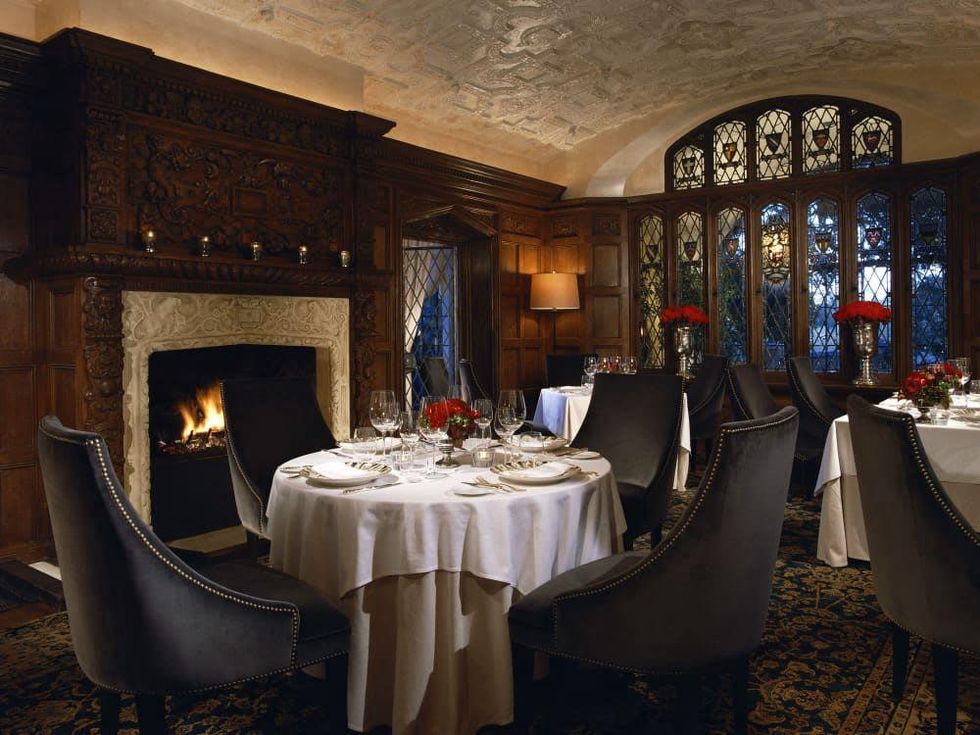Rating the Star System
Dallas restaurant critic kerfuffle raises questions about star ratings
In the ongoing controversy surrounding the credibility of restaurant reviews at the Dallas Morning News, one of the chief complaints is the newspaper's (mis)application of stars. The topic surfaced again during a meeting by Dallas restaurateurs, who recently convened in an effort to change the newspaper's broken restaurant coverage.
The often-confusing and inconsistent assignment of stars on restaurant reviews has been a pet peeve of chefs and restaurateurs such as John Tesar and Shannon Wynne; the latter owns restaurants such as Meddlesome Moth, Lark on the Park and Bird Cafe in Fort Worth.
A topic that's been raised many times over the years, stars are a ball of confusion, both in how they work and why anyone cares. But they matter to restaurateurs because stars can affect their bottom lines.
History of DMN stars
Stars for restaurant reviews go back to Michelin, the French guide-book company, which introduced its star system for restaurant reviews in 1926. Michelin's system has three stars and focuses on food.
Stars are a ball of confusion, both in how they work and why anyone cares. But they matter to restaurateurs because stars can affect their bottom lines.
The Dallas Morning News also factors in service and atmosphere, and it uses a five-star system, like Yelp. But the stars have a tortured past, from the well-intentioned misuse of their early days, to the more recent mishaps resulting from the newspaper's delegation of star management to unschooled outsiders.
Prior to 2007, the DMN had a system that, though flawed, was mostly functional. Restaurants received three separate ratings for food, service and atmosphere. Those three ratings were combined into a final average. Breaking out the factors gave reviewers the flexibility of assigning, say, four stars for the food to a dive.
A great fried-chicken place could celebrate the four stars it received for food and ignore the one star it got for atmosphere, while a fine-dining restaurant could justifiably be proud for getting four stars in all three areas.
There were also half-star ratings, for an additional four rating slots.
But there was a flaw: The newspaper would not publish one-star reviews. Nobly concerned that a one-star review could smite a restaurant with a single stroke, management forbade them entirely. If a reviewer turned in a one-star review, it got killed. Even two-star reviews were discouraged.
This policy was friendly to the restaurant community. But a five-star system that never uses the bottom three ratings is inaccurate.
When Bill Addison was hired as dining critic in 2007, the newspaper gave him free rein to remake the ratings system. Addison eliminated the half stars, and his changes put the paper in line with other publications. But it was a reality check for restaurants in Dallas-Fort Worth and source of confusion to readers accustomed to the old format.
Addison, however, was a fair-minded and experienced critic whose application of stars was consistent and well-considered.
After his departure, the system was revamped further when the three-part ratings were consolidated into a single star.
Who cares about stars
Two groups use stars, for different reasons: diners and industry organizations. Diners are the group that concern Shannon Wynne.
"How many people actually read through the reviews?" he asks. "The whole point of the star system is for people to look at the stars and move on."
Industry organizations are the category that concern John Tesar. "At the end of the year, when 'best of' lists are made by national publications, they'll only look at places that have been awarded the highest number of stars," he says.
For restaurants at a certain level — the Fearing's, the Mansions, the Stephan Pyles — four-star and higher ratings translate into invitations from food festivals, James Beard nominations and travel magazine touts, and that trickles down into out-of-town interest which translates into money.
"It's not about the awards, it's about the income," Tesar says. "If you're a restaurant at a certain level, it has the potential to seriously affect your bottom line."
The newspaper's current single-rating format doesn't address the differences between kinds of establishments. Pitting a restaurant with higher aspirations such as Proof + Pantry, which uses Riedel glassware even for water glasses, against a barbecue restaurant that serves its food on a paper-lined tray, isn't helpful for readers.
There's also, in recent years, what feels like a disconnect between the tone of the review and the number of stars that has left chefs and readers scratching their heads.
Regardless of the whims or biases of individual critics, local restaurateurs are rallying for a better system that treats restaurants more fairly. Some of the suggestions have included the following:
- Reverting to the old method of awarding separate stars for food, service and atmosphere
- Getting rid of stars entirely and going with a three-pronged "good, very good, excellent" system
- Separating restaurants into price groups
- Eliminating the five-star rating altogether
"The current star rating system is weighted to the higher end," Wynne says. "Five stars is described as 'exceptional,' and four stars is described as 'excellent.' But what is the difference between exceptional and excellent? And if Dallas has only two restaurants rated as 'exceptional,' doesn't the five-star rating seem to be a waste?
"It's like taking a telescope used for looking at solar systems 50 million light years away and looking at Richardson, Texas, with it," he says. "It's too fine a scalpel for the type of surgery we have here."




